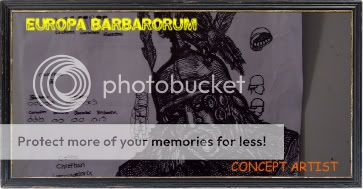Here's another one about armor. The helmet of a modern soldier protects the wearer's head by sitting around the skull, supported by straps, rather than on it. That way, the energy from a blow isn't transfered to the wearer's head. How did the ancient helmets do this? A thin sheet of metal alone isn't going to do much to protect your head. You may not suffer any gashes but you will risk getting a concussion or your skull cracked. There are probably very few surviving good quality specimens today so I'm sure this is all best guess. Did they have padding of some sorts? Thick leather or maybe wool to absord the blows? Someone I know once said the Imperial Gallic helmet rested on the brow of a soldier and the rest of the helmet was lifted around the skull. I also heard the Spartans used their own hair, tied in a kind of bun, as padding when they wore the heavy corinthians.






 Reply With Quote
Reply With Quote








 ) scutum always looked too heavy to be gripped like that.
) scutum always looked too heavy to be gripped like that.

















Bookmarks